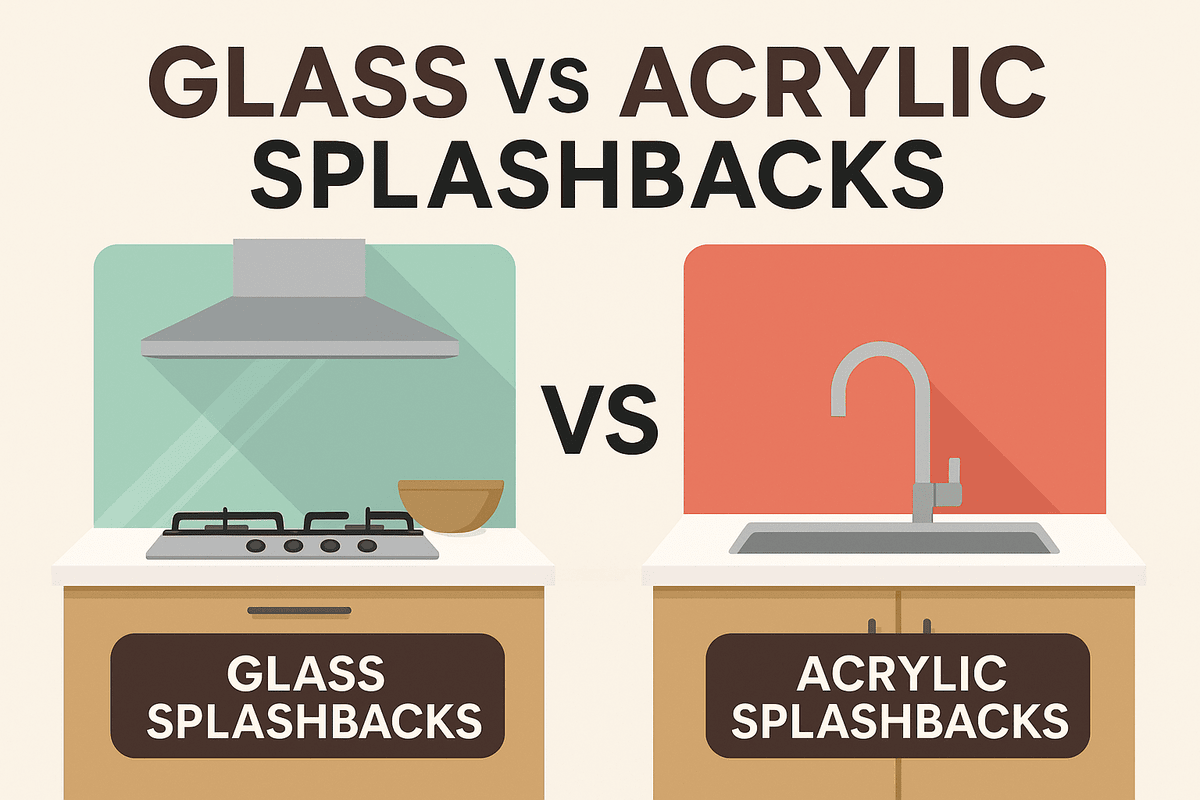Thinking of giving your kitchen a little makeover? Here’s a small feature that makes a big difference: the splashback. Not only does it protect your walls, but it also adds a touch of style. Two popular choices are glass splashbacks and acrylic splashbacks. Which one’s right for you? Let’s break it down in simple terms..!
What Are Glass Splashbacks?
Glass splashbacks are made from tempered glass. They’re sleek, heat-resistant, and available in a wide range of colours or printed designs. Their glossy finish reflects light, making your kitchen feel brighter and more spacious. Perfect for high-heat areas like behind the hob, they give your kitchen a premium look.
What Are Acrylic Splashbacks?
Acrylic splashbacks are made from durable plastic. They look similar to glass but are lighter, more affordable, and easier to install. They’re ideal for quick upgrades and come in various vibrant colours, making them a great option for budget-friendly projects or DIY installations. Just remember to keep them away from heat sources.
Key Factors to Consider
Design and Colour Options
Both types of splashbacks come in a range of colours and finishes. Glass splashbacks can be back-painted or custom-printed, while acrylic splashbacks often feature bold, solid colours. glass offers an ultra-glossy finish, whereas acrylic has a slightly softer sheen.
Heat Resistance
Glass splashbacks are heat-resistant, making them safe to install behind hobs or cooktops. Acrylic splashbacks are not heat-resistant and can warp or melt if placed too close to heat. If you need a splashback directly behind your stove, glass is the safer option.
Cost
Glass splashbacks are typically more expensive, especially when opting for custom designs. If you’re working within a budget, acrylic splashbacks are a more affordable choice. However, the durability and premium look of glass can make it a worthwhile investment.
Cleaning and Maintenance
Both types are easy to clean with a soft cloth. Glass splashbacks, however, are more resistant to scratches and generally easier to maintain. Acrylic splashbacks are more prone to scratches, so it’s important to clean them gently and avoid abrasive materials.
Ease of Installation
Acrylic splashbacks are lightweight and easy to cut to size, making them ideal for DIY projects. Glass splashbacks, being heavier, usually need professional installation to ensure they’re properly cut and fitted.
Pros and Cons of Glass Splashbacks
Pros:
- Heat-resistant
- Modern, glossy appearance
- Scratch-resistant
- Long-lasting
Cons:
- Expensive
- Heavy
- Requires professional installation
5. Pros and Cons of Acrylic Splashbacks
Pros:
- Affordable
- Easy to install
- Lightweight
- Great range of colours
Cons:
- Not suitable for use behind stoves
- Prone to scratches
- Less durable
How to Decide?
If you’re looking for something heat-resistant, sleek, and long-lasting, glass splashbacks are the way to go. But if you’re on a budget, love bold colours, and fancy a quick DIY project, acrylic splashbacks are worth considering.
Every kitchen is unique, so base your decision on your needs, style, and budget.
Conclusion
Both glass and acrylic splashbacks have their strengths, but there’s no one-size-fits-all answer. Think about where you’ll install it, how hot that area gets, and how much you’re willing to spend. Then, make your choice with confidence. Your dream kitchen is just one splashback away!






